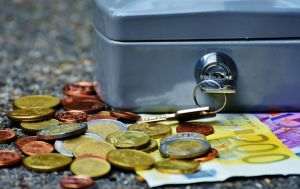• Investor demand increased 10 times over the last 10 years, indicating a new stage of exuberant growth
• Long term price target: 2,300 USD; upward trend continues
• Institutional investors - particularly insurers and pension funds - will dominate the next stage of exuberant growth on the gold market
Gold demand from investors increased over ten times over the last ten years, which indicates that gold is entering a new stage of exuberant growth, as China and India stimulate demand, analysts of Erste Group state in a report.
According to them, the price of gold was also affected by the monetary stimuli, and a new rise in the price of gold is expected. Erste indicates a target price of 2,000 dollars for gold in the coming 12 months.
"Since we published our first report concerning gold five years ago, its price has increased 140%. Expert estimates from three years ago, which expected its price to reach 2,300 dollars in the long run, could even be considered too conservative now", said Ronald Stöferle, gold analyst at Erste Group.
• Gold has a lot to win from the sovereign debt crisis
The issue of excessive debt is still without a solution, as most of the debts have not been cancelled or repaid. Because of this, real interest rates will remain low, which provides the perfect environment for gold, the Erste report states: "There are only a few ways to get out of the debt trap: increasing the debt, like the United States did after WW2, or the alternative of drastically cutting spending and rigidly consolidating the budget, like the Scandinavian countries did in the in 1990s.
Some of the most painful options are massive tax hikes, creating inflation, depreciating the currency, or, as a last resort solution, sovereign default. We expect gold to come out a winner from any of these scenarios".
Analysts also mention that India and China remain the most important on the demand side: "A higher attraction towards gold, combined with an increase in disposable income, will definitely have a positive effect n demand for gold. By 2020, emerging markets will generate 50% of the global GDP, up from 19% in 2000".
• No speculative bubbles in sight
Investor demand only represented 4.8% of the total demand in the year 2000, but its weight increased to almost 40% last year. According to analysts of Erste Group, this evolution indicates a clear and strong recovery of the upward trend, and announces a new stage of exuberant growth in the market: "We can expect institutional investors to dominate the next stage. First and foremost, insurance companies and pension funds should be the first to increase their investments in gold, given its low or even negative correlation with stocks, and especially with bonds. Gold is known as a safe investment because it has never lost its value".
• Approximately 5 - 10% of the portfolio should be invested in gold
Gold should be part of every portfolio, for reasons of diversification and portfolio protection, the report states. According to the report, about 5-10% of the portfolio should be invested in gold.
"We still expect the price of gold to increase at least as much as it did now, to the inflation-adjusted level of 2,300 dollars/ounce (since 1980), once the market"s exuberant rise stage is over", Stöferle said. Some historical comparisons explain why gold carries no interest: "Gold is pure ownership, without any obligation towards any person or institution. It has no counterparty risk."
On the international markets, gold fell to a six-week low, as worries over a Greek default fell significantly.
The price of gold with August delivery fell 20.20 dollars, (1.3%), to 1,482.60 dollars/ounce in Comex New York. On Friday, the exchange rate of gold fell to 1,478.30 dollars/ounce, the lowest level since May 17th. Last week, the price of gold fell 1.2%, and 2.2% in June - 2.2%.
• A return to the gold standard?
The idea of a currency that wasn"t correlated with gold would have most likely been deemed absurd 100 years ago, Erste analysts say. Today, merely the idea that in 1971 every 35 USD were the equivalent of a physical ounce of gold seems absurd. "A return to the gold standard is not realistic at the moment. Nevertheless, discussions over this topic have begun once again. This idea would need to gain critical mass before concrete measures are implemented", said Stöferle. Various currency studies present an interesting phenomenon: The more a currency is correlated to gold, the more inflation drops.









































